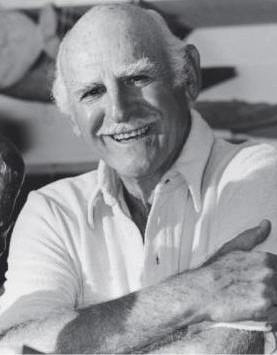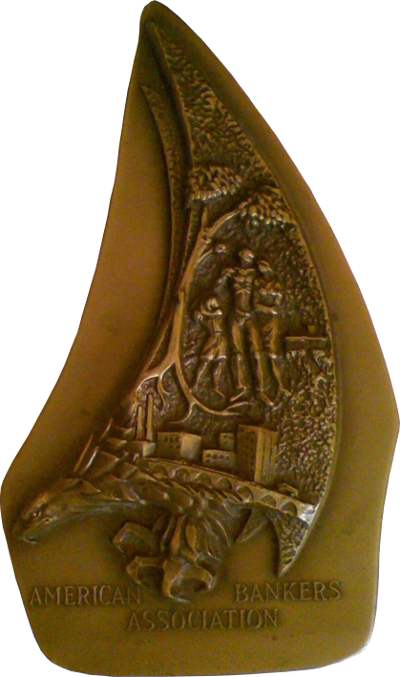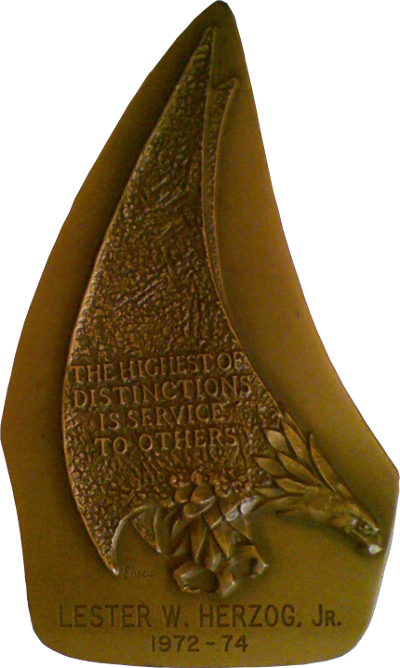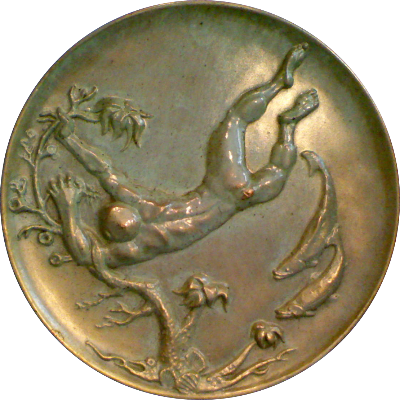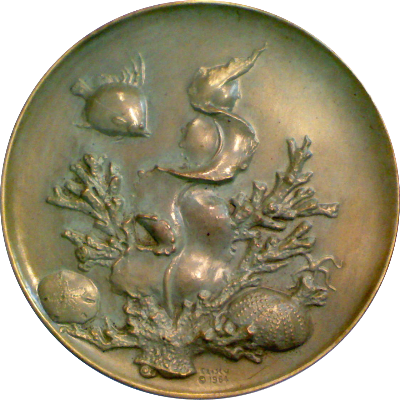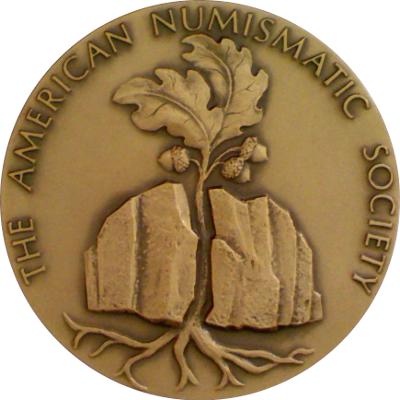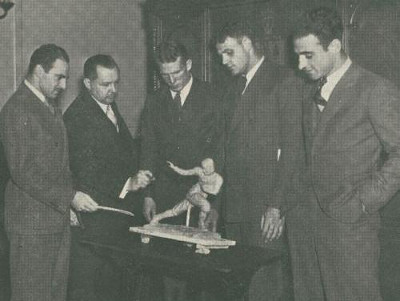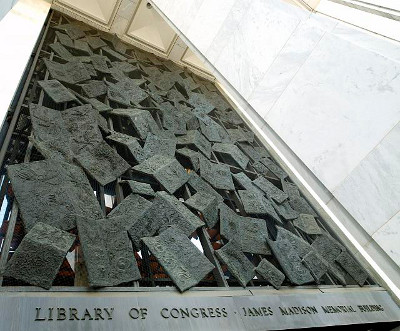Frank Eliscu was born in Washington Heights, New York, to Charles Eliscu and Florence Kane. From age eight on he knew that he wanted to be an artist and despite the family's lack of financial resources, his parents were supportive of his dream. Frank Eliscu's father was an accountant who had wanted to be an artist himself and he was not going to deny his son a chance to fulfill his dream. Young Frank took to modeling with paraffin and putty. He attended the Pratt Institute, from which he graduated in 1935. His artistic talent was obvious and he had his first show in his graduation year (1929) at age 17. This also happended to be the year of the big stock market crash.
While his parents were morally supportive, they could not support him financially in pursuing his dream. Eliscu had to work to support himself, but he managed to get jobs that allowed him to be creative. He got a job in a mannequin factory; he also worked in a chocolate factory where he made Easter bunnies; he worked in a doll factory. It didn't matter what the job was, as long as he could use some form of sculpting.
Luck was with Eliscu when he met Harrison Tweed, former head of the New York Bar Association. Tweed supported talented youths who lacked financial resources by paying for their higher education. Eliscu had earned and exhausted a one-year art scholarship, but Tweed came to the rescue and paid for the completion of his schooling.
Eliscu won his first paid commission when was just 19 and right out of art school. Better-known artists had not been interested in the project because it did not pay very well. Eliscu did it with enthusiasm. The project was the Heisman Trophy which became the most prestigious college sports award and is given annually to the best college football player. As Eliscu put it:
It was not one of my best works of art, but it turned out to be kind of like the Statue of Liberty: not beautiful, but it's dear to people's hearts."
Whether it is a good work of art or not, it made him famous and shows at the Clay Club (1935) and the Architectural League of New York followed. During his college years he apprenticed with Rudolph Evans and worked with him on the Jefferson statue for the Thomas Jefferson Memorial. In 1942 he graduated from the New York Teacher's College and was awarded his teching certificate in 1944.Like most of his contemporaries, his education was interrupted by World War II. Eliscu served in the army from 1942 to 1945. His artistic talents were first put to use to create camouflage and maps for the allied invasion. In 1943 he developed a unique technique used by the U.S. Army to rehabilitate facial disfigurements from injuries sustained in battle. According to his discharge papers, he "Made drawings in the operating room of surgical procedures, modeling of features for reconstructive surgery, and carving cartilage for grafting in plastic surgery, pigmentation of skin in plastic procedures. Had three assistants working under him. Served at Valley Forge General Hospital in Plastic Surgery Department." Following his service, the unique research Eliscu did on tattooing pigmentation to cover the discoloration from skin grafts and for people with port wine stains was used at the New York Hospital. Eliscu applied for a patent for the tool he developed to use intradermal injections of permanent pigments.
After his military service Eliscu became a teacher at the School of Industrial Arts in New York City. He taught there from 1945 till 1970 but always worked as a sculptor. He has two National Monuments to his credit: "Uncle Joe Cannon" at the Cannon House Office Building and "Falling Books", a five-story high bronze at the James Madison Library of Congress. The latter sculpture took Eliscu 10 years to complete and in 1985 won him top honors from the National Sculpture Society. The heroic bronze, along with Eliscu"s plaque of Uncle Joe Cannon in the same city, has been declared a national monument, and by law can never be removed or changed in any way.
Eliscu is represented in Brookgreen Gardens; in the Metropolitan Museum with his Society of Medalists medallion titled "Sea Treasures", (1964); in the Smithsonian Museum Archives, coins titled, "Lewis & Clark," (1966); and in National Academy of Fine Arts Museum, with a bronze, (1967).
In addition to his Society of Medalists work he also created the first multi-part medal made in the United States titled "Inspiration" the official Inaugural Medal presented to President Ford as well as the official medal commemorating the inauguration of Nelson A. Rockefeller as Vice President. President Ford later presented a bronze eagle, an enlarged three-dimensional version of the one on the Presidential medal, to Leonid I. Brezhnev, the Soviet leader. In 1988, Eliscu designed an award for the Caring Institute to give annually to the most caring people in America.
Steuben Glass commissioned Eliscu to do the engraving design for many of their pieces, including "Carousel of the Seasons", "To a Giraffe", "Daniel" and "St. Francis". He was called "an imaginative realist"; Eliscu often draws on biblical and classical themes for his sculpture designs. Other works for Steuben include a "Noah's Ark" shown on the cover of the Review, and "Daniel in the Lion's Den."
Frank Eliscu died in 1996 at the Sarasota Memorial Hospital in Florida. He left behind his wife Mildred Norman and his daughter Norma Banes.
Sourced mainly from Wikipedia and the articles mentioned on the Resources page.
